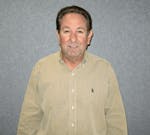Newsmaker: Dan Freeman
For more Newsmakers, please read the redesigned January issue of Aftermarket Business magazine.
What is your view on the continuing consolidation of the manufacturing segment of the aftermarket?
We really don't like the consolidation. We've found that the best suppliers to our members are the smaller companies with just one product category. They tend to provide the best level of service, with more expertise. Once they become acquired, it's usually not as good for our members. The economies of scale seem to reduce the effectiveness to some extent.
Smaller companies are first to market with late-model parts. They do a good job with providing parts, solving problems and generating sales. Larger companies just can’t make things happen as fast. It's never worked in our favor, although perhaps someday it will.
In your opinion, will manufacturing and distribution in the aftermarket industry be different in 2008?
I think we're in a refining environment of all of these different aspects. We continue to see manufacturers becoming global in nature, for example. And on the distributor side, we're starting to see retailers getting into the aftermarket, implementing hub-and-spoke systems.
For example, AutoZone is developing a sales force. Advance recently acquired Foreign Car Parts and CARQUEST did the same with WORLDPAC. It helps them get better at what they're doing.
For our members, however, this kind of development makes for a tougher environment. It goes back to consolidation, where we continue to see fewer independents and more chains, both on the retail and wholesale sides.
Is there an upside for your members, then?
There is: Our members are able to compete with large chains because of their ability to quickly react. A lot of our members are opening new locations and are growing. When a chain buys several stores, they often close a few of them because of their existing presence in a certain market. That is an opportunity for our members. Plus, some of the stores that stay open tend to not be as agile.
What measures are Professionals' Choice members taking to address the continued reliance on value lines that focus solely on price?
I think we're seeing a change. For diagnostic equipment in particular, installers are looking for name brands and quality. Their diagnostics can't afford to be incorrect.
It's almost by category: In some instances, for example, installers are looking for a low-end rotor, but they'll use high-end disc pads because they believe that's more important than which rotor they use. We're seeing a blending of products, a mixing and matching.
Another factor in the price issue is that labor rates are so high that installers are looking for quality products to brand along with them. The end user may not know certain brands, but rebates and specials can influence the installer to offer the rebate to the consumer — or to himself or the technician. The better installers who have service writers do this. The shops that are less organized and are overwhelmed with work do not.
How will the fate of OEM suppliers and the possible ripple effect of more bankruptcies play out for your company?
The bankruptcies have really been more on the remanufacturing side. In those instances, our members are left with a lot of cores and nowhere to go with them. On new products, bigger manufacturers aren't as big a problem.
There aren't many remanufacturers left, to be honest, which is a problem in itself for the industry because sometimes you don't have many options. One place you do see a lot of remanufacturing companies is in Mexico, in the maquiladoras. It's then shipped back to the U.S. for distribution. So while it's not US-made, it is North American product, which helps the economy somewhat.
What do you see for 2008 in general?
There are good things down the road. Transplant manufacturers are building vehicles in the U.S. — foreign nameplates like Denso and Bosch now can give just-in-time delivery. These manufacturers now have either manufacturing and/or distribution presence in the U.S., which creates jobs. We see this as a real asset, offsetting some of the bankruptcies.
One thing we really have to look at is that yes, there is some doom and gloom job-wise in the "Rust Belt" of Michigan, Indiana and Ohio, but the Southeast is building plants like crazy. Yes these are non-union jobs, but they're high-paying jobs, and all these people can now afford to buy cars.
As we look into the future, we're seeing maybe the first and second quarters are not so bright. But the third and fourth quarters do look bright. By then, the housing industry should have recovered, which directly impacts our industry. Housing creates jobs, which use trucks, vehicles and fleet equipment that our members service.
People are not buying homes now, but they are remodeling, and construction companies like Toll Brothers are using trucks, SUVs and excavation equipment for which we can sell filters and lubricants.
How do you see new technology impacting the aftermarket?
Right to Repair is an enormous issue, and new technology like common rail diesel is coming to the U.S. from Europe — without a lot of training attached to it.
Hybrids are another issue where there's not a lot of training available. Who will be the trainers in the future? Who will be adept?
We started a technology committee called iSuccess. The theme is "success through technology." And our No. 1 most popular topic wasn't even something we thought about when we began the committee: Voice over Internet Protocol, or VoIP, with phone and computer systems. At our March meeting, our six-member committee will report on what they've been working on and solicit even more feedback from members.


